Planning your trip to Switzerland? Fantastic choice! Switzerland is easily one of the most beautiful countries we’ve ever visited. From breathtaking views of the Swiss Alps to charming lakeside towns, every corner offers something magical. We’ve explored this beautiful country multiple times, and we’re excited to share our perfect two-week Switzerland itinerary with you. Let’s dive in!
Table of Contents
The Best 14-Day Switzerland Itinerary
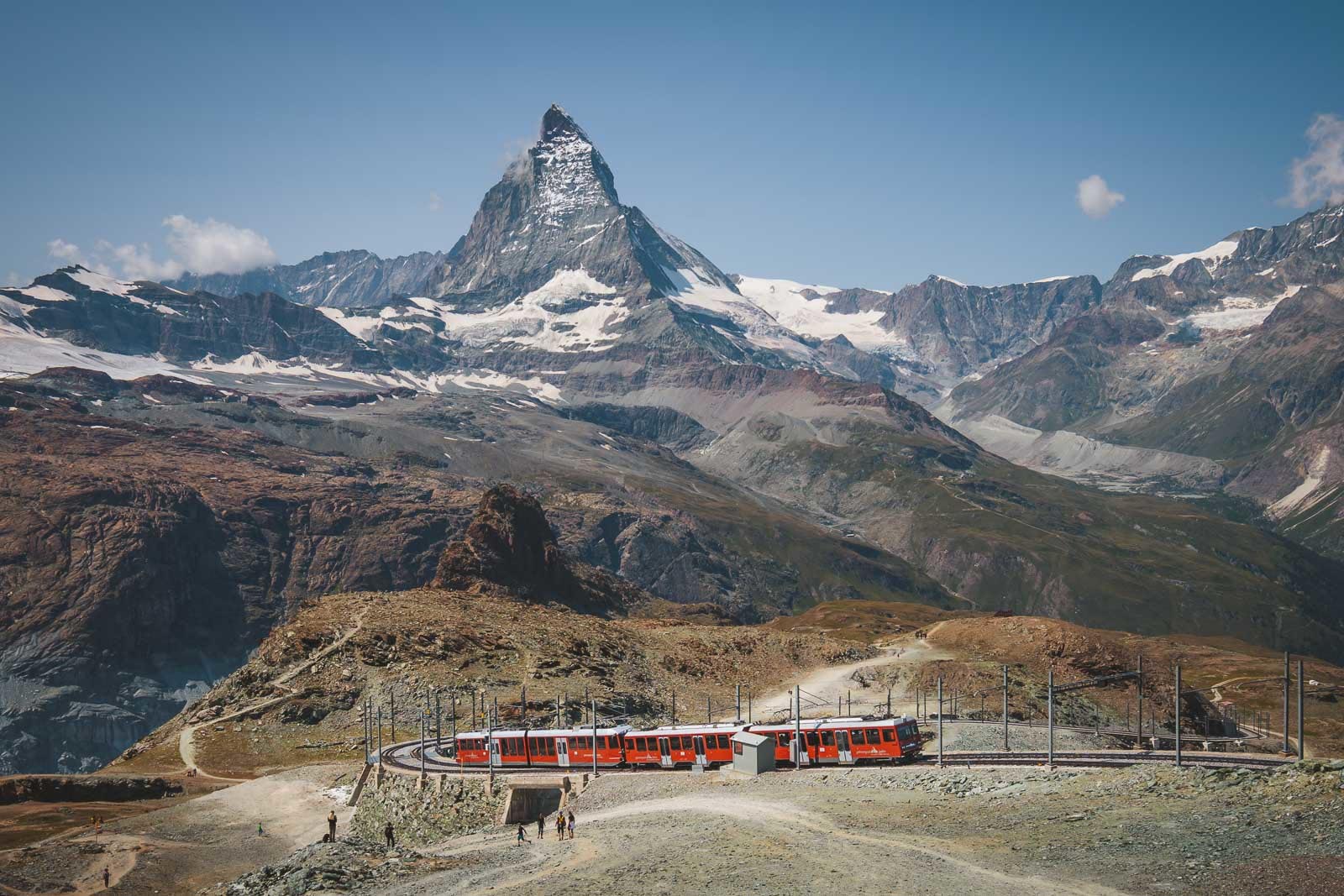
Switzerland is a dream destination for travelers of all kinds, offering dramatic landscapes, fairytale towns, and endless opportunities for outdoor adventure. From the snow-capped peaks of the Swiss Alps to the mirror-like lakes and cultural hubs like Zurich and Geneva, this beautiful country truly has something for everyone. When planning your itinerary, it’s wise to factor in the possibility of bad weather—especially in alpine regions like the Bernese Oberland—so you can keep your trip flexible and stress-free.
Introduction to Switzerland
Switzerland is the most beautiful country located in the heart of Europe, known for its dramatic mountains, picturesque lakes, and storybook villages. The country offers a unique blend of traditional and modern culture, with a strong emphasis on quality of life, innovation, and sustainability. From the snow-capped peaks of the Swiss Alps to the serene shores of Lake Geneva, Switzerland is a destination that has something to offer for every kind of traveler. Whether you’re interested in outdoor activities like hiking, skiing, or paragliding, or prefer to explore the country’s rich history and culture, Switzerland is a must-visit destination. With its well-developed public transportation system, including trains, buses, and boats, getting around the country is easy and convenient. Consider purchasing a Swiss Travel Pass for unlimited access to public transportation, including scenic trains like the Glacier Express and the Bernina Express.
Day 1 of Switzerland Itinerary: Arrival in Zurich airport
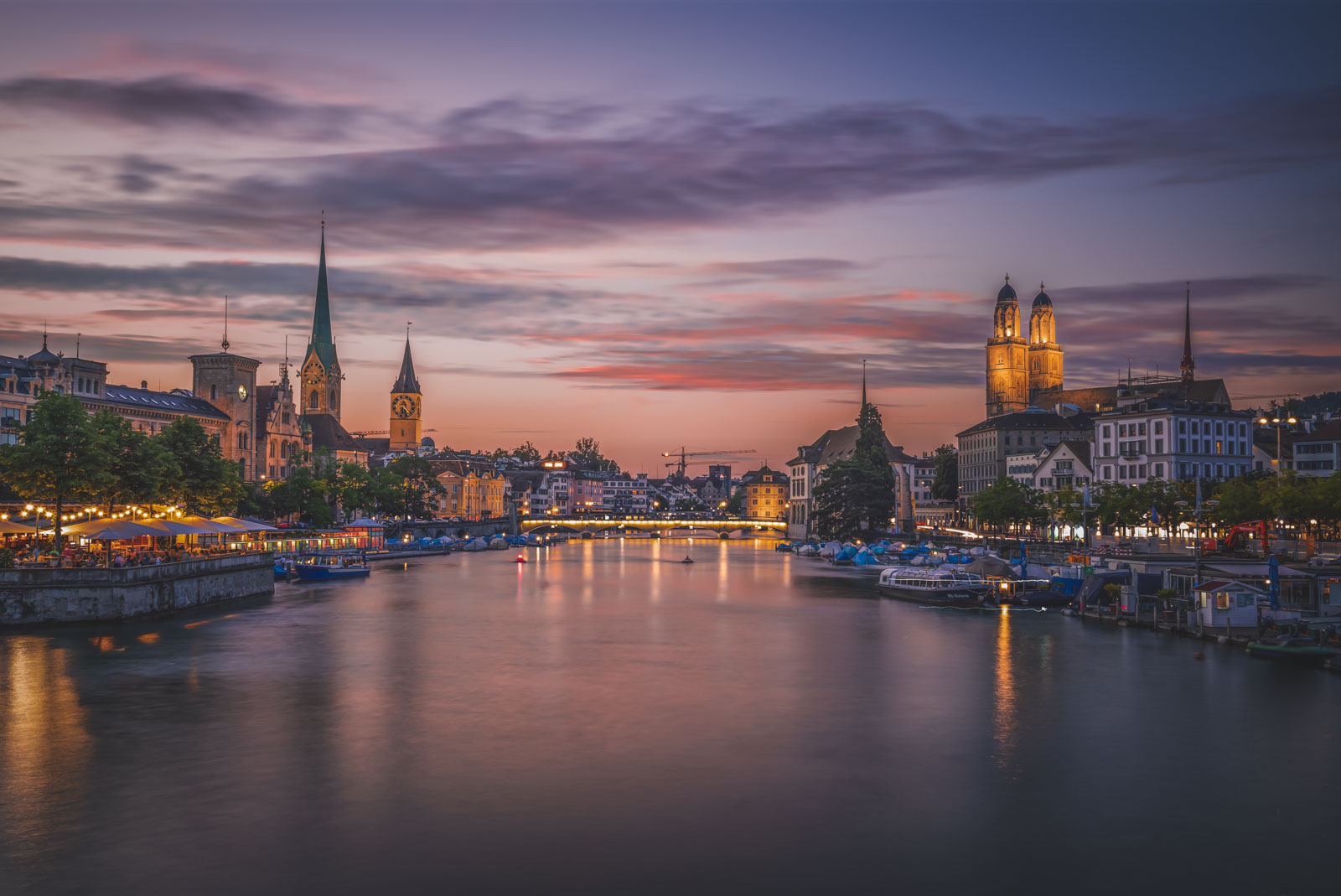
Morning: Explore Zurich City
Welcome to Switzerland! After arriving at Zurich Airport, grab your bags and take a train to the city center—the Swiss Pass is ideal and convenient for your whole trip. Spend the morning strolling through Zurich’s Old Town, Niederdorf, where cobblestone streets weave past centuries-old buildings, boutique shops, and bustling cafés. Visit the historic Grossmünster church and admire the stained glass windows designed by Marc Chagall at Fraumünster. Don’t miss Bahnhofstrasse for a quick peek at luxury shopping or even just to people-watch as trams glide through the city center.
Afternoon: Relax by Lake Zurich
After lunch, take a short tram to Bürkliplatz and hop on a scenic boat ride across Lake Zurich. The views of the surrounding mountains and lakeside villas are spectacular. Consider hopping off in the lakeside town of Rapperswil for a short visit—home to a beautiful rose garden and a small castle. Back in Zurich, walk along the lakeside promenade to Sechseläutenplatz, the perfect spot to grab a gelato and take in the view. If you have more time, you can spend a half day exploring Zurich and its many attractions.
Evening: Traditional Dinner
End your day enjoying local specialties like cheese fondue or Zürcher Geschnetzeltes in a cozy Zurich restaurant. We love Swiss Chuchi in the Hotel Adler—it’s one of the best spots in the Old Town for traditional fare. For a more upscale experience, try Restaurant Zeughauskeller, a Zurich institution located in a 15th-century armory. After dinner, take a stroll down Augustinergasse, one of the most photogenic streets in Zurich, before heading back to your hotel.
Where to Stay in Zurich
For a central location and great service, we recommend Hotel Storchen, right on the Limmat River with views of Old Town. For budget-friendly options, the citizenM Zürich offers a modern and fun stay within walking distance of all the main sights.
Planning Day Trips
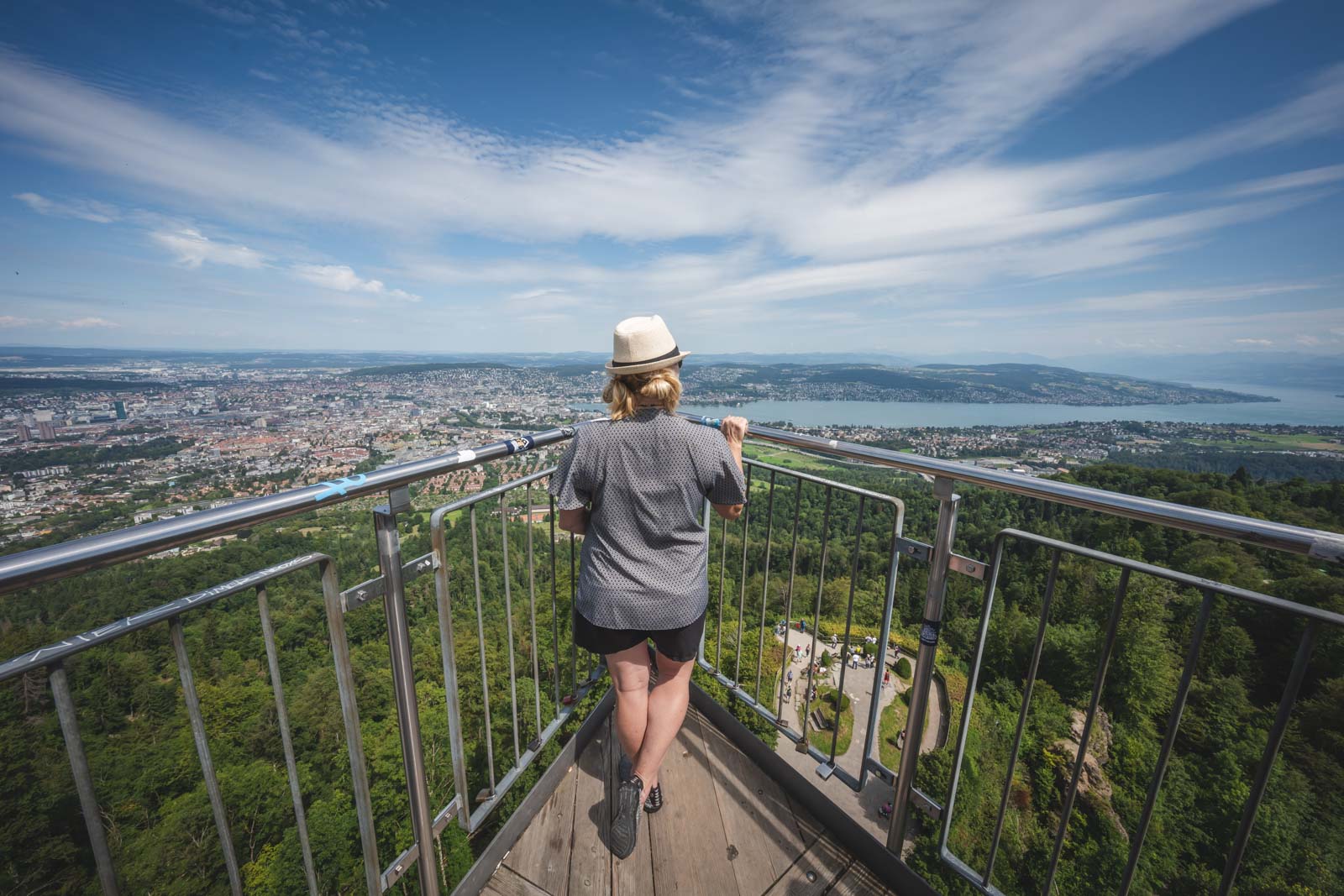
Planning day trips is an essential part of any trip to Switzerland. With its compact size and efficient public transportation system, it’s easy to explore different parts of the country in just a day. From the charming lakeside town of Lucerne to the picturesque Lauterbrunnen Valley, there are countless options for day trips in Switzerland. Consider taking a cable car ride to the top of a mountain, such as Mount Pilatus or the Schilthorn, for breathtaking views of the surrounding mountains and lakes. Or you can take a boat ride on Lake Geneva or Lake Como. With a little planning, you can make the most of your time in Switzerland and experience all that this has to offer. Don’t forget to purchase a Swiss Travel Pass for convenient and affordable travel on public transportation, including trains, buses, and boats.
Day 2: Zurich to Rhine Falls & Stein am Rhein
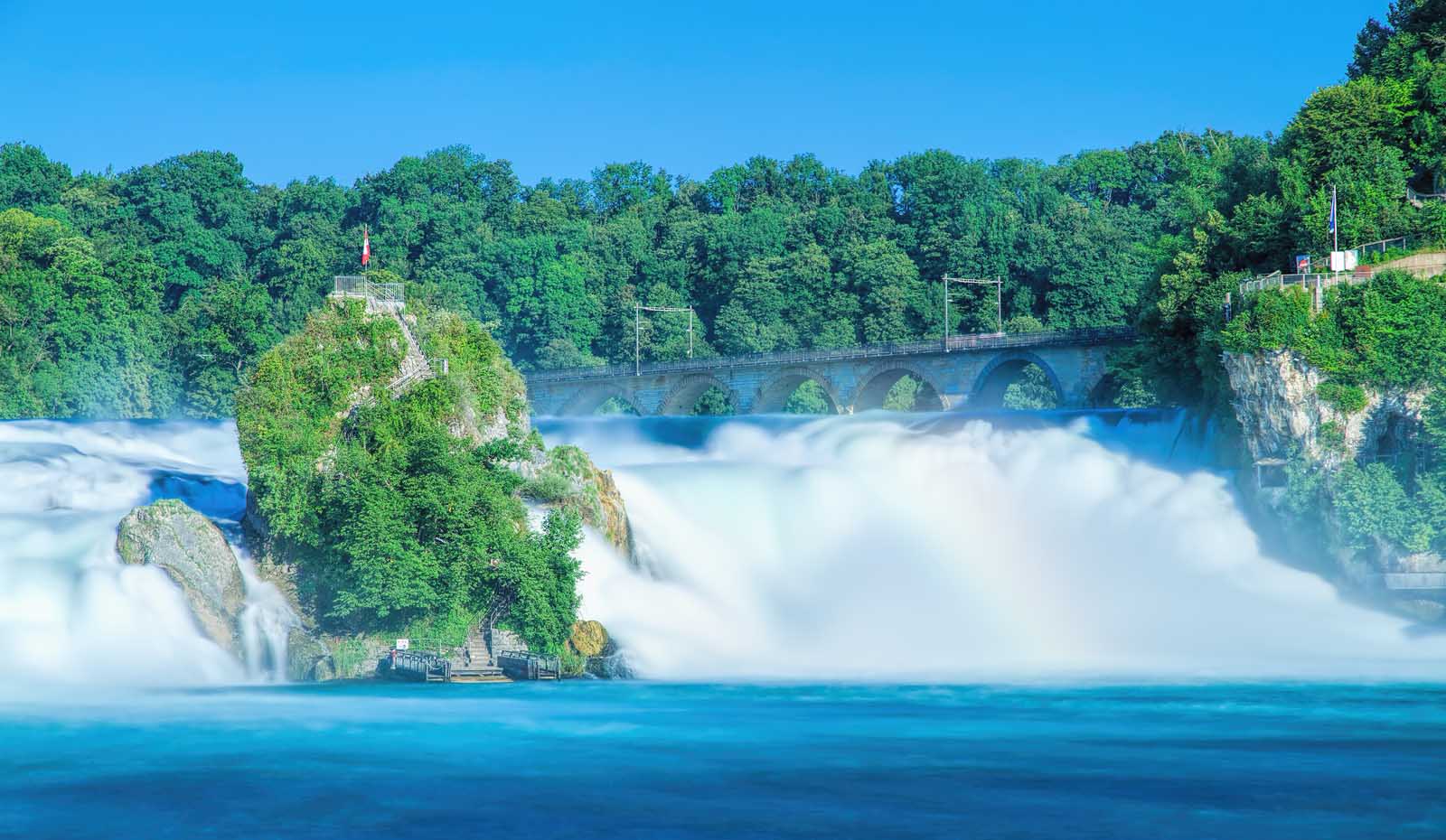
Morning: Rhine Falls
Start your morning early by taking a short train ride from Zurich to Schaffhausen, followed by a local connection to the Rhine Falls. We recommend arriving before 10:00 a.m. to beat the crowds and enjoy the views in peace. You’ll want to spend about 2–3 hours here to truly soak it all in. Don’t just admire the falls from the viewing platforms—purchase tickets for the boat ride that takes you right to the base of the crashing water. It’s loud, exhilarating, and completely unforgettable.
There’s also a panoramic lift and walking trails that offer a stunning view of the Rhine and the surrounding countryside. For lunch, grab a riverside table at Schlössli Wörth, where you can dine on Swiss specialties while gazing at the falls.
Afternoon, Stein am Rhein
In the afternoon, hop on a short train ride to Stein am Rhein. This postcard-perfect town looks like it belongs in a fairy tale, with its charming squares, cobblestone lanes, and half-timbered houses adorned with colorful frescoes. Spend a couple of hours wandering, taking photos, and maybe enjoying a scoop of gelato in the main square.
Evening Zurich West
Back in Zurich for the evening, head to Zurich West for dinner and a bit of nightlife. Once an industrial district, this neighborhood is now full of trendy restaurants, converted warehouses, and cool bars. We love Frau Gerolds Garten for its laid-back atmosphere and market-style seating. If you’re in the mood for something more upscale, LaSalle inside a former shipbuilding hall offers great modern Swiss cuisine. Finish the night with a drink at the rooftop bar of Clouds, located in the Prime Tower—the tallest building in Zurich. 3 days in Zurich Day 3: Zurich to Lucerne
Take a short train ride to Lucerne, famous for its iconic wooden Chapel Bridge. Explore the city on foot, visiting landmarks like the Lion Monument. Lucerne is beautiful, and its charming old town is perfect for photos.
Day 3: Zurich to Lucerne
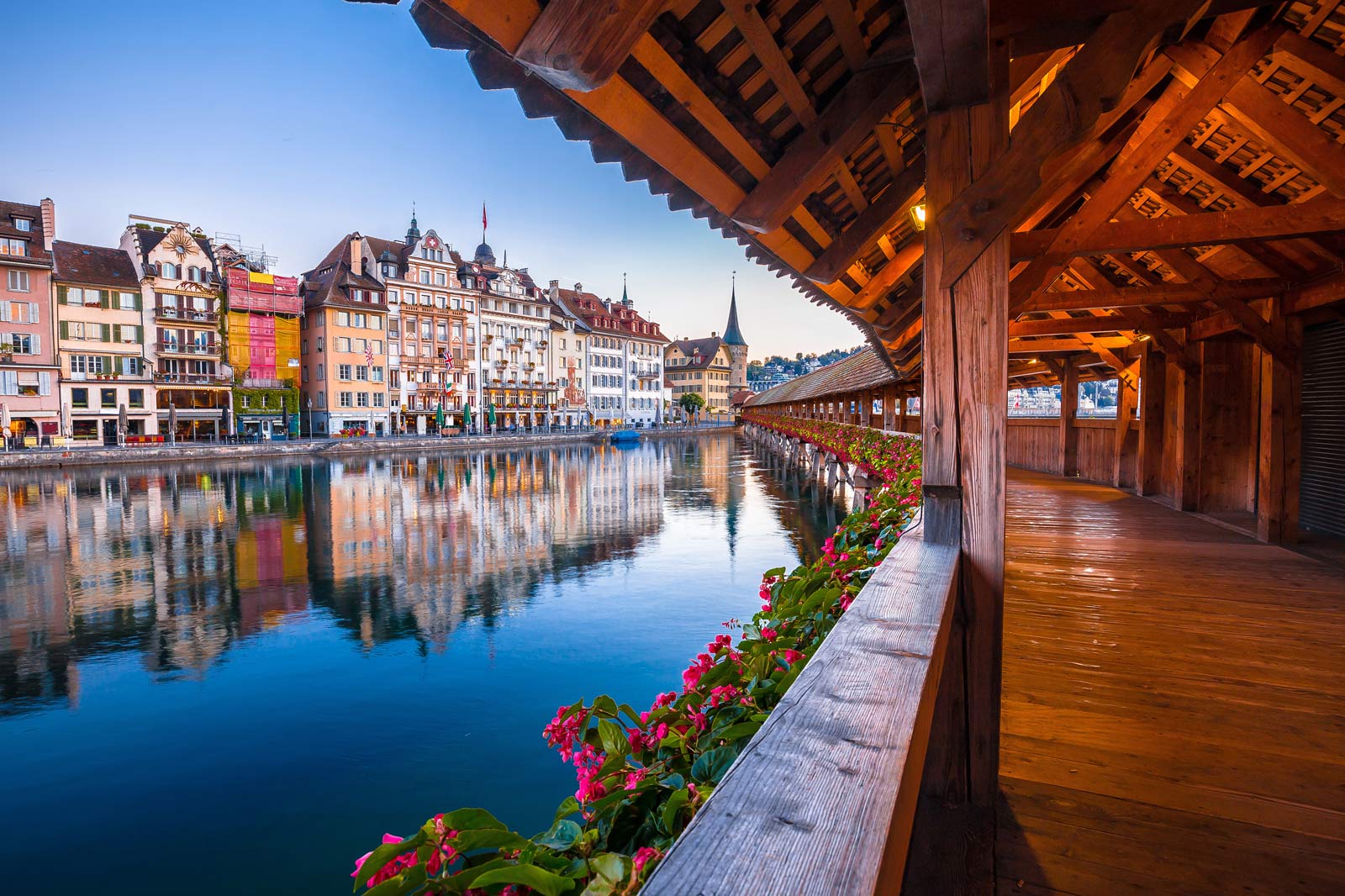
Morning:
Take a short train ride—just under an hour—from Zurich Hauptbahnhof to Lucerne’s main train station. It’s a smooth, scenic journey and one of the best ways to kick off your day. Lucerne is one of Switzerland’s most photogenic towns, known for its cobbled streets, medieval architecture, and jaw-dropping alpine backdrop. Start your walking tour by heading straight to the Chapel Bridge (Kapellbrücke), one of the oldest wooden covered bridges in Europe and a top highlight of any Switzerland itinerary. Yes, it’s free to cross and absolutely worth seeing for its painted interior panels and flower boxes.
Next, make your way to the Lion Monument, a touching tribute to Swiss Guards who lost their lives during the French Revolution. Then stroll the city walls at Museggmauer, where a few towers are open to climb for excellent views of the town and Lake Lucerne. Wander the Old Town and pop into local shops or relax at a lakeside café along the promenade.
For lunch, check out Wirtshaus Galliker for authentic Lucerne-style dishes or Zur Werkstatt for something a bit more modern but equally delicious.
Afternoon: Mount Pilatus Adventure
In the afternoon, take a boat from Lucerne’s dock to Alpnachstad, where the world’s steepest cogwheel railway awaits. This famous ride up to Mount Pilatus costs around CHF 78 round trip, but it’s included with the Swiss Travel Pass during summer months. The journey itself is stunning, with the cogwheel train climbing through forests, rocky cliffs, and panoramic alpine meadows.
At the summit, enjoy breathtaking views of the Swiss Alps and surrounding mountains. There are short hiking trails, a cliff walk, and even a café where you can sip a cappuccino at 2,100 meters above sea level. On the return journey, take the cable car down to Kriens and hop on a short bus back to Lucerne—it’s a fun loop and gives you two modes of mountain transport in one day. At the top of Mount Titlis, don’t miss the exciting ice cave, a unique attraction that adds to the adventure.
Where to Stay in Lucerne
We recommend Hotel des Balances, located right in the heart of the Old Town with views of the Reuss River. For a budget-friendly stay, Barabas Hotel—a former prison turned stylish accommodation—is fun and unique. If you prefer lake views, the Hotel Schweizerhof Luzern is a gorgeous historic option right on the waterfront.
Afternoon: Mount Pilatus Adventure
Ride the world’s steepest cogwheel railway to the summit of Mount Pilatus, offering stunning views of the Swiss Alps and the surrounding mountains.
Day 4: Lucerne to Bern
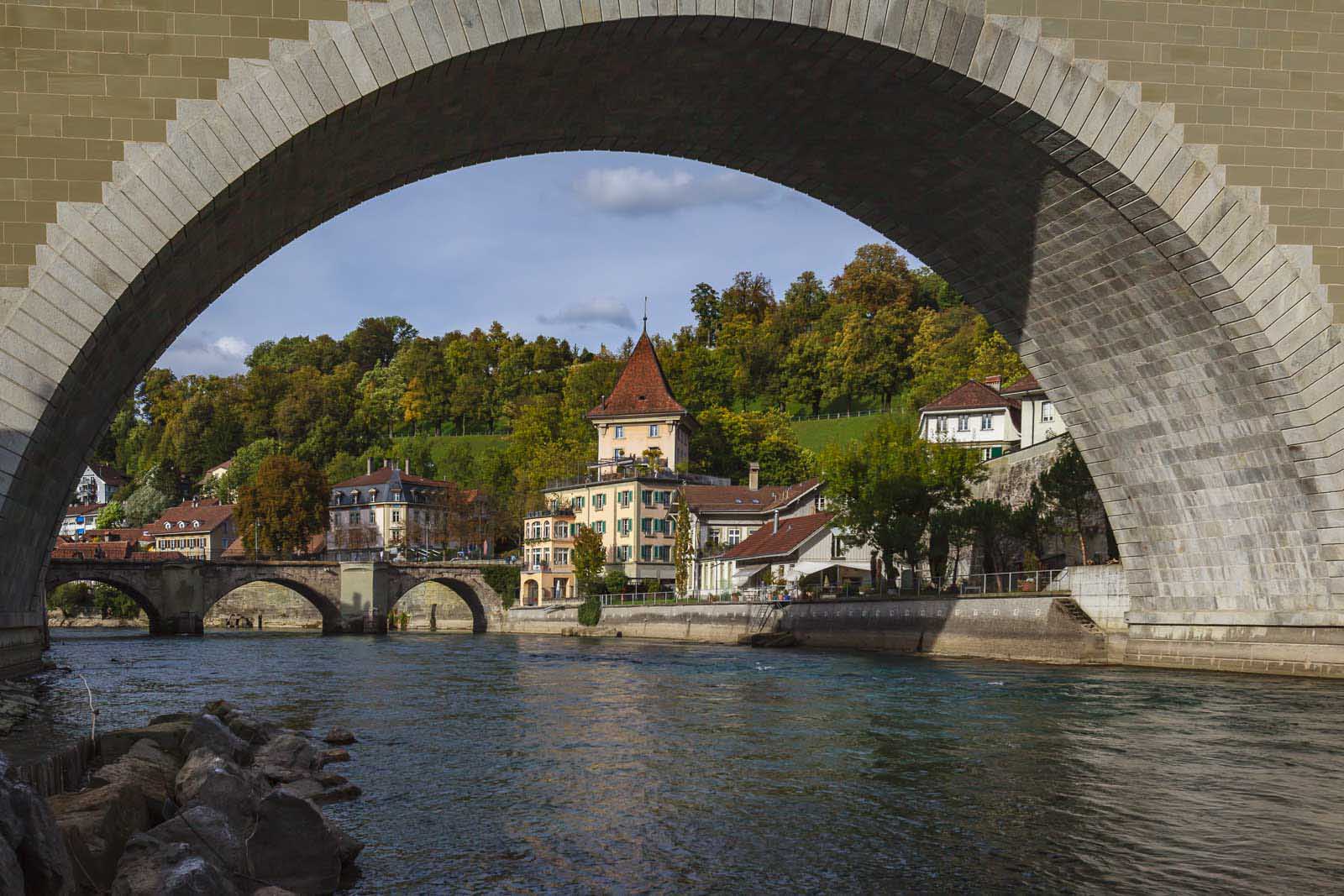
Morning: Scenic Train Ride
Catch a direct train from Lucerne’s main train station to Bern—it’s about a one-hour journey through pastoral landscapes, small villages, and rolling hills. While not as dramatic as mountain routes, it’s a beautiful train ride that offers a relaxing transition between two of Switzerland’s most charming cities. Trains depart regularly, and your Swiss Travel Pass covers this route, making it easy to hop on without needing a seat reservation.
Afternoon: Explore Bern
Once you arrive, check into your hotel and then set off to explore Switzerland’s understated capital. Bern’s entire Old Town is a UNESCO World Heritage Site, and it’s easy to see why. Stroll past sandstone arcades, clock towers, and fountains, and be sure to visit the famous Zytglogge—a medieval clock that performs a whimsical show on the hour. You can even join a short guided tour inside the clock tower.
Continue your walking tour by heading down to the Aare River, where you can see the Bear Park—home to Bern’s animal mascot—and then hike uphill to Rosengarten. From here, you’ll get one of the best panoramic views of the city’s red rooftops and the surrounding mountains.
Pop into the Einstein Museum if you’re a history buff, or just enjoy wandering the city center. For something sweet, stop at Confiserie Tschirren for handmade Swiss chocolate and truffles.
Where to Eat and Stay in Bern
For dinner, head to Restaurant Della Casa, a local favorite serving up hearty Bernese cuisine. For something more upscale, try Kornhauskeller—a grand former wine cellar turned elegant restaurant with vaulted ceilings and Swiss classics.
If you’re staying the night, Hotel Schweizerhof Bern offers luxurious rooms right across from the train station. For a boutique option, check out Hotel Savoy, which is modern and centrally located. On a budget? Bern Backpackers Hotel Glocke offers clean rooms in the heart of the Old Town.
Day 5: Bern to Interlaken
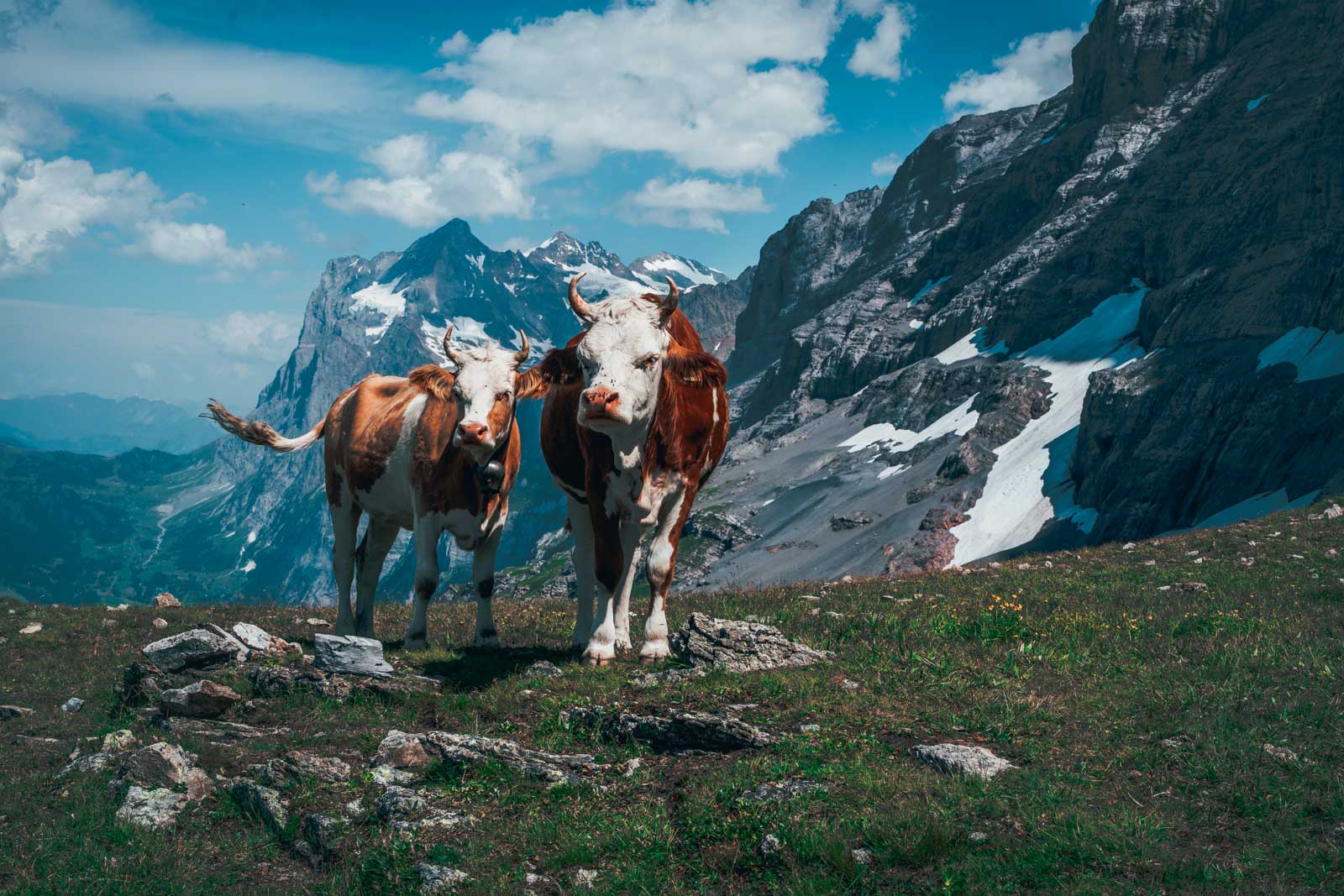
Morning: Scenic Train Ride from Bern to Interlaken
The train ride from Bern to Interlaken takes about an hour and a half and is covered by the Swiss Pass. Sit on the left-hand side of the train for the best lake views as you pass through the beautiful countryside and small villages that define this part of Switzerland. It’s one of those journeys that really remind you why train travel is the way to go here.
Afternoon: Outdoor Adventures and Lakeside Fun in Interlaken
Once in Interlaken, you’ll quickly notice the energy shift—this lakeside town is the adventure capital of Switzerland. Nestled between Lake Thun and Lake Brienz and backed by the towering peaks of the Jungfrau region, Interlaken is far from sleepy. For outdoor lovers, there are a ton of options. You can paraglide from Beatenberg for incredible aerial views, rent a kayak or paddleboard and explore the lakes, or book a canyoning or jet boat tour if you’re after adrenaline. For something more relaxed, hop on a boat ride across Lake Thun or Lake Brienz. They’re both included in your Swiss Travel Pass and make for perfect afternoon escapes. Consider spending an extra day in the Bernese Oberland to explore more activities and sightseeing opportunities.
Evening: Base Yourself in Interlaken or Grindelwald
Interlaken itself is a great base for exploring the Bernese Oberland, but if you’re looking for something even more picturesque, consider staying in Grindelwald instead. It’s just 30 minutes away by train and offers a more alpine vibe with direct access to the Eiger and several hiking trails.
Where to Stay
In Interlaken, Hotel Interlaken is a long-standing favorite with great mountain views and a lovely garden. For budget travelers, Backpackers Villa Sonnenhof is a top-rated hostel with excellent amenities. In Grindelwald, check out Hotel Belvedere Grindelwald for a classic mountain stay with stunning views and a spa to unwind after a long day.
Where to Eat
For lunch, check out Restaurant Taverne in Interlaken, where you can sample traditional dishes with a modern twist. For dinner, head to The 3 Tells Irish Pub for a casual vibe, or if you’re in Grindelwald, treat yourself to a hearty mountain meal at Barry’s Restaurant, which serves up regional cuisine in a cozy alpine setting.
Day 6: Jungfraujoch – Top of Europe
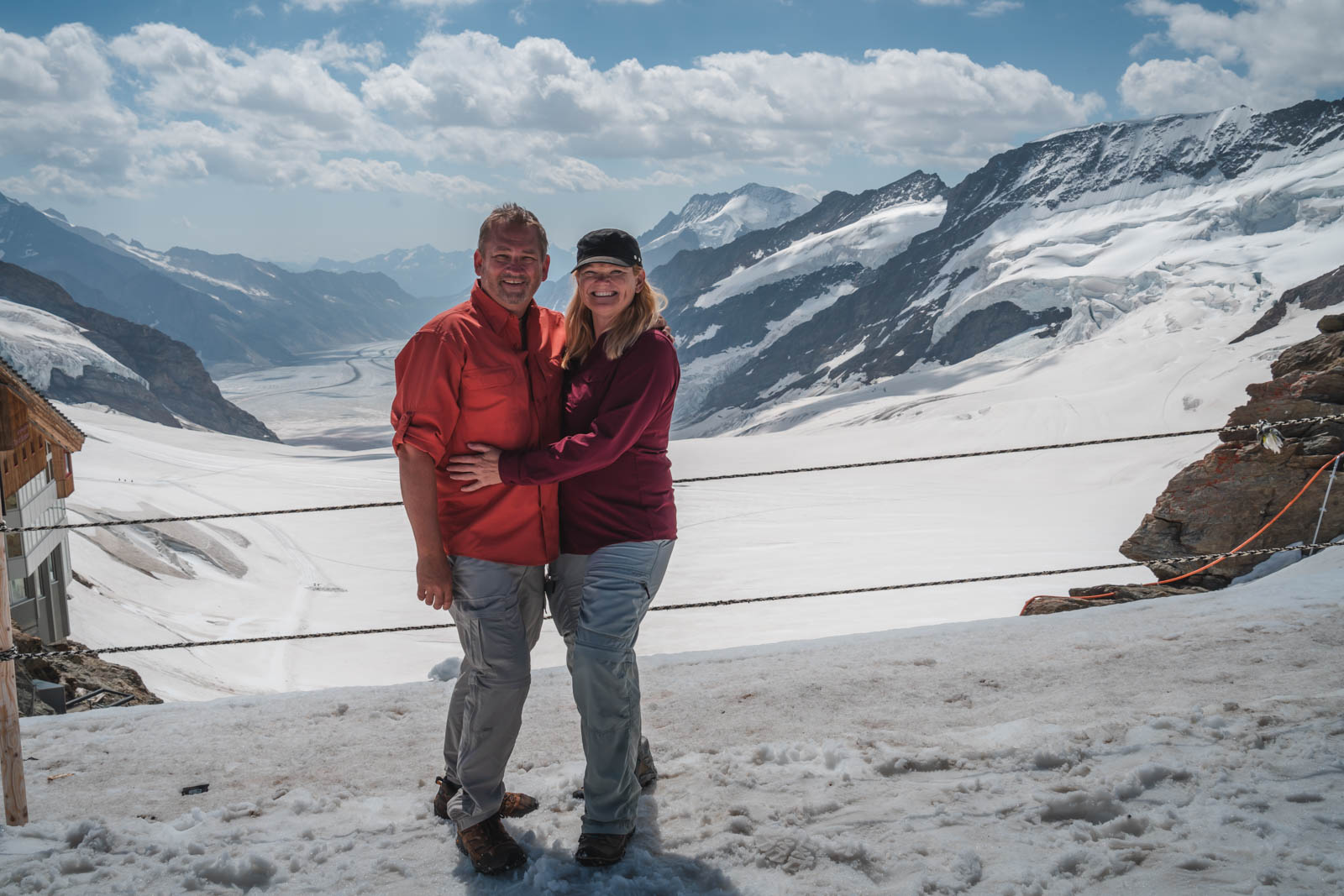
Morning: Scenic Train and Cable Car Journey
Start your day early and take the train from Interlaken to Grindelwald Terminal, where you’ll board the Eiger Express gondola. This express route connects to the Jungfraujoch railway, with a scenic stop at Kleine Scheidegg, and brings you up to the Top of Europe much faster than the traditional full train route. Even if you’re in second class, the panoramic windows provide jaw-dropping views of the surrounding mountains and glaciers as you ascend. Be sure to use your Swiss Pass to get discounted rates on the ride—round trip tickets cost around CHF 210 without discounts.
Midday: Explore Jungfraujoch Summit
Once at the top, you’ll have time to explore the Ice Palace, the Sphinx Observatory, and snow activities at the Snow Fun Park (in summer). Grab lunch at Restaurant Crystal or the self-service cafeteria for quicker service—expect prices around CHF 25–30 for a main dish. Don’t forget to take photos from the observation deck, one of the highest accessible points in Europe.
Afternoon: Hike the Eiger Trail
After descending back to the Eiger Glacier station, switch gears and enjoy the beautiful Eiger Trail hike. This scenic route leads you downhill toward Alpiglen and takes about 2 to 2.5 hours. The trail hugs the base of the Eiger North Face and offers unforgettable views over the Lauterbrunnen Valley and small villages below. It’s a fantastic way to get out into nature without committing to a full-day mountain hike.
Evening: Dinner and Relaxation
Return to Interlaken or Grindelwald by early evening. For dinner in Grindelwald, Restaurant Alpenblick serves traditional Swiss alpine cuisine in a rustic setting. If you’re back in Interlaken, head to Husi Bierhaus for hearty pub fare and a great local beer selection. End the evening with a relaxing walk along the lakeside promenade or unwind in your hotel’s spa—trust us, your legs will thank you!
Day 7: Lauterbrunnen Valley
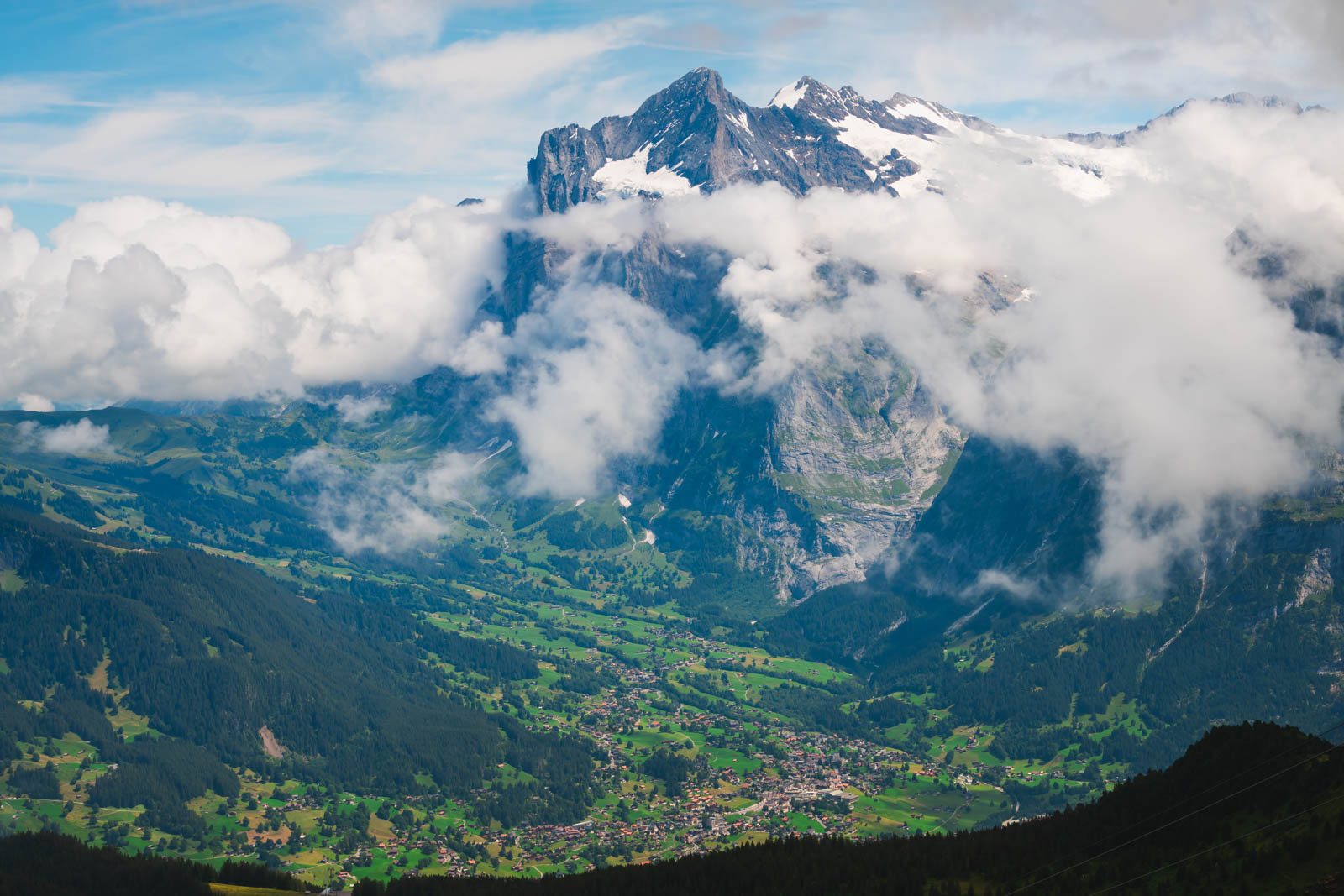
Morning: Explore Lauterbrunnen and Trümmelbach Falls
Take a short train ride from Interlaken to Lauterbrunnen—it’s about 20 minutes and offers lovely views along the way. Once you arrive, you’re in one of the most iconic valleys in the Swiss Alps. Lauterbrunnen is famous for its 72 waterfalls, dramatic cliffs, and alpine meadows. Start with a walk to Trümmelbach Falls, an underground series of glacial waterfalls tucked inside the mountain. These are the only glacier waterfalls in Europe accessible by lift, galleries, tunnels, and paths—entry is CHF 12 for adults and well worth it.
Afternoon: Grindelwald First Adventure or Mürren Excursion
You have two fantastic options this afternoon. If you’re up for thrills and iconic views, head to Grindelwald First. Accessible by gondola from the center of Grindelwald, this mountain area offers incredible experiences like the First Cliff Walk—a heart-racing suspension walkway built into the side of the mountain. For the adventurous, you can also try the First Flyer zip line, mountain cart, or trotti bike back down to the village. Plan about 3–4 hours to take it all in.
If you prefer a more relaxed but equally scenic afternoon, stick with the original plan to take the cable car up to Grütschalp and the scenic train to Mürren—a car-free alpine village with jaw-dropping views of the Eiger, Mönch, and Jungfrau. This is a wonderful spot for a slower-paced afternoon of mountain air, photo ops, and a short hike between Grütschalp and Mürren (about 1.5 hours).
Alternatively, head to Wengen on the opposite side of the valley via a short train ride. Both villages offer incredible viewpoints and charming alpine vibes. Another great afternoon option is the walk to Staubbach Falls, just outside Lauterbrunnen village, where you can walk behind the cascading water.
Evening: Dinner and Relaxation in Lauterbrunnen or Grindelwald
Return to Lauterbrunnen in time for dinner. We recommend Hotel Oberland’s restaurant for hearty Swiss fare and a lovely outdoor terrace. If you’re staying in Grindelwald, Barry’s is once again a top choice for atmosphere and delicious alpine specialties. End your day with a stroll through town or grab a drink with a view if you’re in a hotel with a terrace—you’ve earned it after a full day of exploring one of the most beautiful valleys in the world.
Day 8: Interlaken to Montreux (Golden Pass Line)
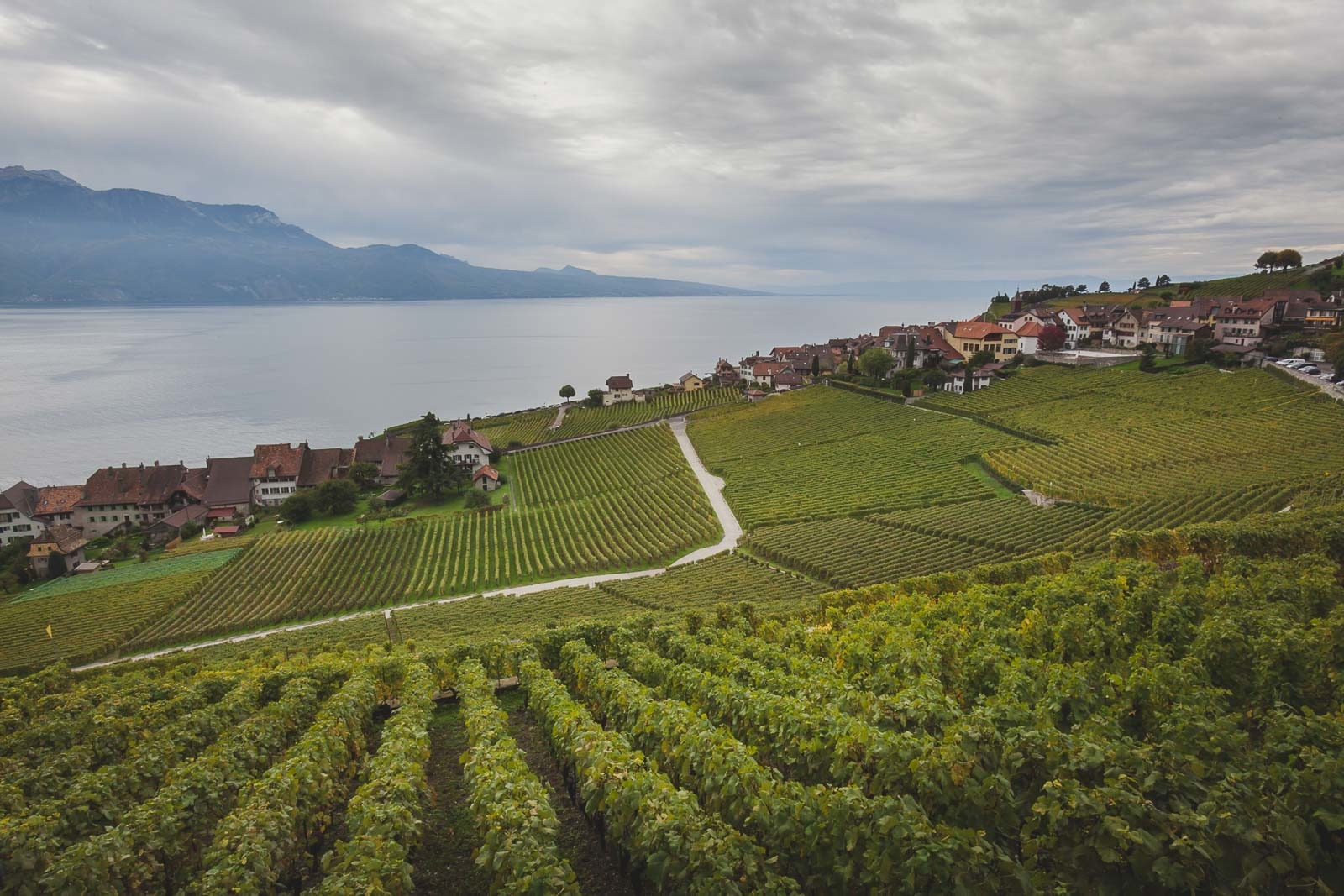
Morning: Ride the Golden Pass Line
Start your day with one of the most beautiful train rides in Switzerland. The Golden Pass Line from Interlaken to Montreux is part of the legendary scenic route that connects the Bernese Oberland to Lake Geneva. This express route takes approximately 3 hours and passes through charming villages, rolling green meadows, and dramatic mountain landscapes. The section between Zweisimmen and Montreux is particularly stunning, offering panoramic views as the train descends into the French-speaking region of Switzerland. While seat reservations aren’t required, we recommend purchasing a reservation for a panoramic carriage, especially during high season.
Afternoon: Explore Montreux and Lake Geneva
After checking into your hotel, spend the afternoon exploring Montreux. This lakeside town is famous for its microclimate, Belle Époque architecture, and stunning setting along the shores of Lake Geneva. Walk along the lakeside promenade—lined with exotic flowers and sculptures—and snap some Instagram-worthy shots of the Dents du Midi in the background. Stop at the Freddie Mercury statue, a tribute to the Queen frontman who recorded here, and enjoy a relaxed vibe that feels more Riviera than Alps.
If you’re up for a short walk or bike ride, head toward Château de Chillon (you’ll visit more in-depth tomorrow) to get a feel for its fairy-tale exterior.
Evening: Lakeside Dining
As the sun sets, settle in for dinner at Montreux Jazz Café located inside the Fairmont Le Montreux Palace—great food and fantastic ambiance. Another excellent option is Restaurant La Rouvenaz, offering delicious Italian and seafood dishes right near the waterfront. After dinner, enjoy a glass of Swiss wine by the lake or pop into a local wine bar for a taste of Lavaux’s finest.
Where to Stay in Montreux
For lakeside luxury, you can’t beat the Fairmont Le Montreux Palace. If you’re traveling on a mid-range budget, Eurotel Montreux offers beautiful views and a prime location. For something more boutique, Hotel Eden Palace au Lac has old-world charm and a stunning setting right on the water.
Day 9: Montreux and Château de Chillon
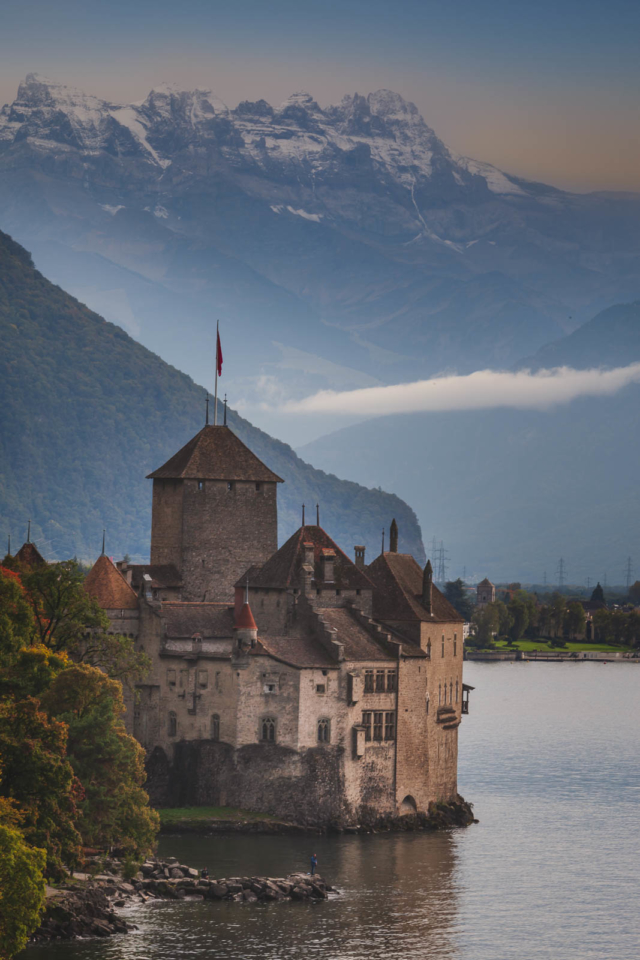
Morning: Visit Château de Chillon
Start your morning with a visit to the iconic Château de Chillon, located just a short bus or scenic lakeside walk from central Montreux. This medieval fortress sits right on the edge of Lake Geneva and is one of the most photographed castles in Switzerland. Admission is around CHF 13.50, and guided tours or audio guides are available to help you explore the dungeons, towers, and great halls. Lord Byron even carved his name in one of the dungeon pillars, and you can see it for yourself.
Afternoon: Explore Montreux and Lavaux Vineyards
After your castle adventure, spend some time strolling through Montreux’s charming city center. Explore the boutiques along Grand Rue, enjoy a coffee at one of the lakefront cafés, and wander the floral-lined promenade. In the afternoon, take a short train ride or boat to the Lavaux Vineyard Terraces—this UNESCO World Heritage Site is an absolute dream. Hike the scenic trails between villages like Cully and Epesses or do a local wine tasting at a family-run vineyard. The views over the terraced hills and Lake Geneva are breathtaking.
Evening: Sunset Dining by the Lake
Head back to Montreux for dinner and enjoy lakeside dining at Restaurant Le Jaman or Caveau des Vignerons in nearby Vevey if you’re in the mood for a short trip. These spots offer cozy settings with excellent Swiss wines and cuisine. After dinner, enjoy an evening walk along the lakeside promenade as the sun dips behind the Alps—pure magic.
Day 10: Montreux to Gruyères and Broc
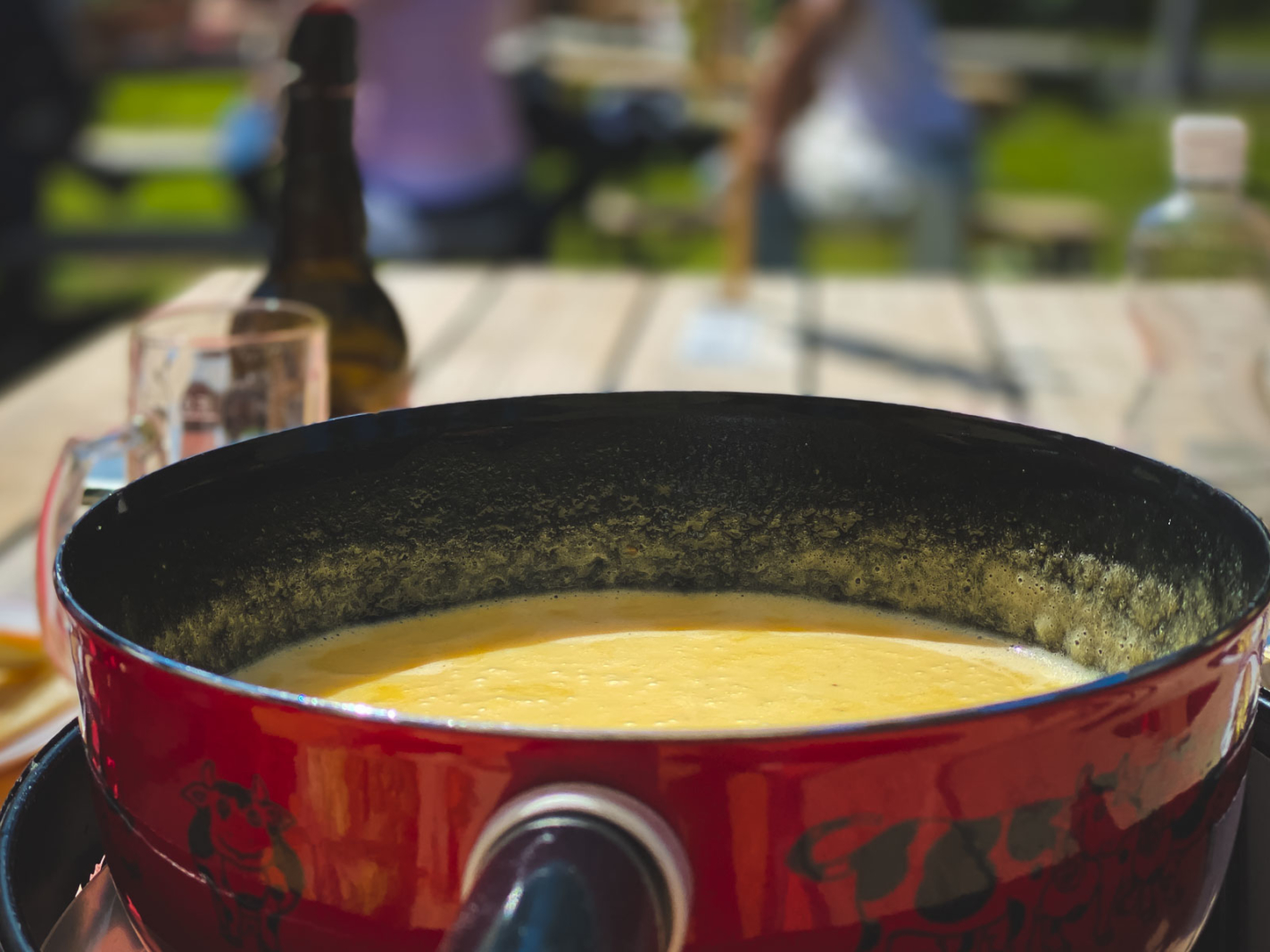
Morning: Day Trip to Gruyères
Catch a morning train from Montreux to Gruyères, which takes about 1 hour and 45 minutes. Start your visit at Château de Gruyères, perched on a hill with panoramic views of the surrounding region. The castle dates back to the 13th century and costs CHF 12 to enter. Afterward, walk down to La Maison du Gruyère cheese factory, where you can learn about the cheesemaking process and sample the region’s famous product. Entry is around CHF 7 and includes tastings.
Afternoon: Chocolate Heaven in Broc
After your cheese fix, hop on a short train or bus to Broc to visit La Maison Cailler—Switzerland’s most beloved chocolate factory. Their interactive tour ends with unlimited chocolate tasting, which is exactly as dreamy as it sounds. Admission is CHF 15, and if you’re traveling with kids (or are a kid at heart), this is one of the most memorable stops of your whole trip to Switzerland.
Evening: Travel to Zermatt
From Broc, return to Montreux to collect your bags and consider the convenience of a rental car for the journey to Zermatt. The journey takes about 2.5 hours and includes a transfer in Visp. No cars are allowed in Zermatt, so you’ll complete the final leg by electric shuttle or on foot. Settle in for the night and get ready to explore Zermatt and the Matterhorn tomorrow.
Where to Stay in Zermatt
We recommend Hotel Matterhorn Focus for design lovers, or the family-run Hotel Alpenblick for cozy alpine charm. On a budget? Check out the stylish youth hostel with Matterhorn views.
Day 11: Zermatt and the Matterhorn
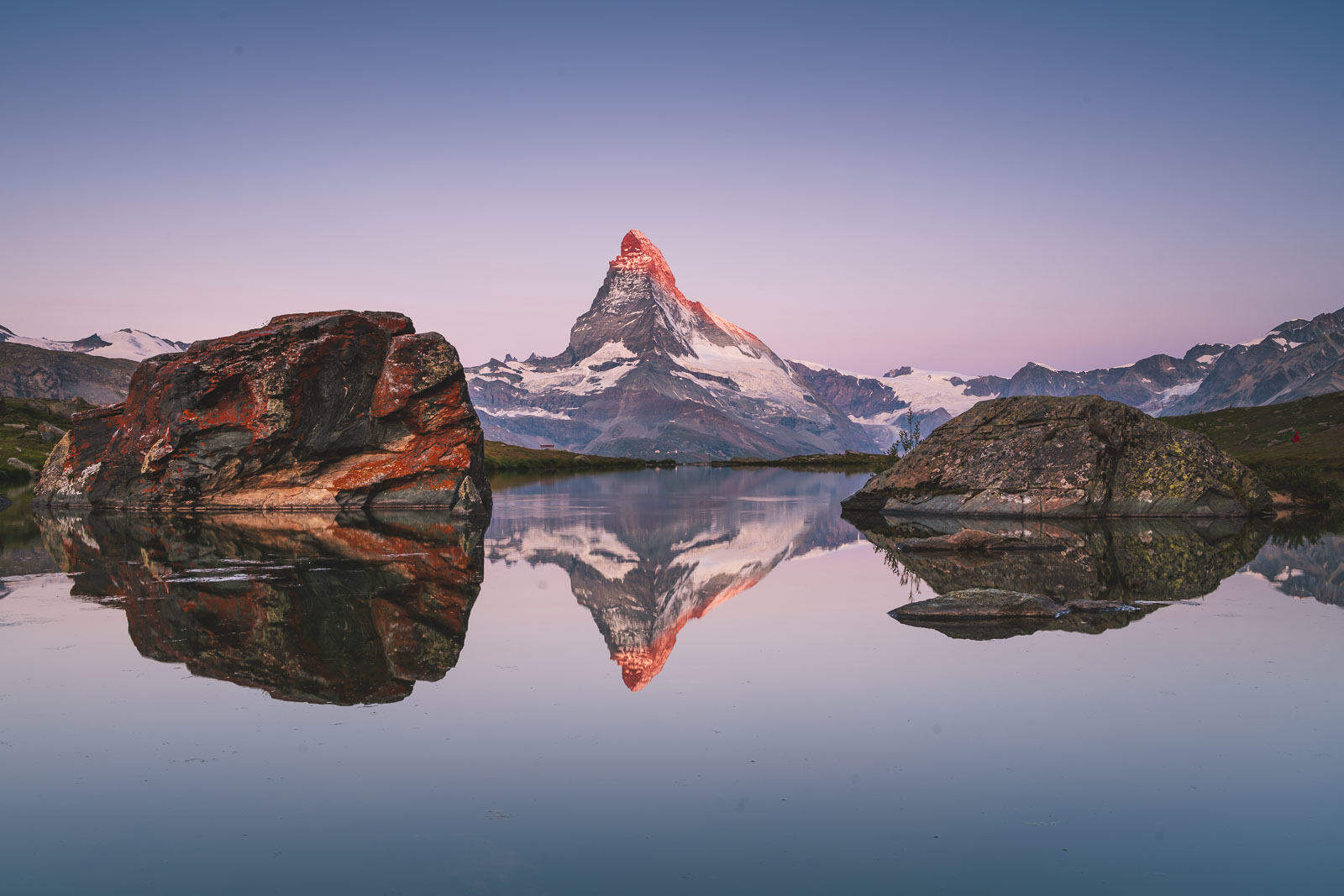
Morning: Matterhorn Sunrise and 5 Lakes Hike
Wake up early and catch the sunrise over the Matterhorn—it’s a magical experience that makes the early alarm totally worth it. From there, take the funicular or gondola to Blauherd and begin the 5-Seenweg (5 Lakes Trail), one of the best hikes in the Zermatt region. The trail takes around 2.5 hours and brings you past five picturesque alpine lakes, including Stellisee, where you’ll have a chance to photograph that iconic Matterhorn reflection if the conditions are right. This hike is relatively easy and great for enjoying at your own pace, with panoramic views of the Swiss Alps and charming wildflower-dotted meadows.
Afternoon: Ride the Gornergrat Cogwheel Train
After your hike, return to town, grab a light lunch at a café like Petit Royal or Fuchs Bakery, and then board the Gornergrat Bahn. This scenic cogwheel train climbs to 3,089 meters and is truly one of the most beautiful train rides in Switzerland. The ride takes about 30–40 minutes, with stunning views of surrounding peaks, glaciers, and, of course, the mighty Matterhorn. At the summit, you’ll find an observatory, photo ops galore, and a café if you want to linger over the view.
Evening: Explore Old Town Zermatt and Dinner
Back in Zermatt, wander the Old Town and its charming laneways like Hinterdorfstrasse, filled with centuries-old wooden chalets. Stop by the Matterhorn Museum if you have time—it’s small but interesting, detailing the early climbs and life in the region.
For dinner, Schäferstube is always a winner for traditional fare like cheese fondue, rösti, and grilled meats. Prefer something a little more elevated? The Omnia serves up gourmet dining in a chic setting. Wrap up your day with a stroll down Bahnhofstrasse or a nightcap at Harry’s Ski Bar.
Day 12: Glacier Paradise and Zermatt Relaxation
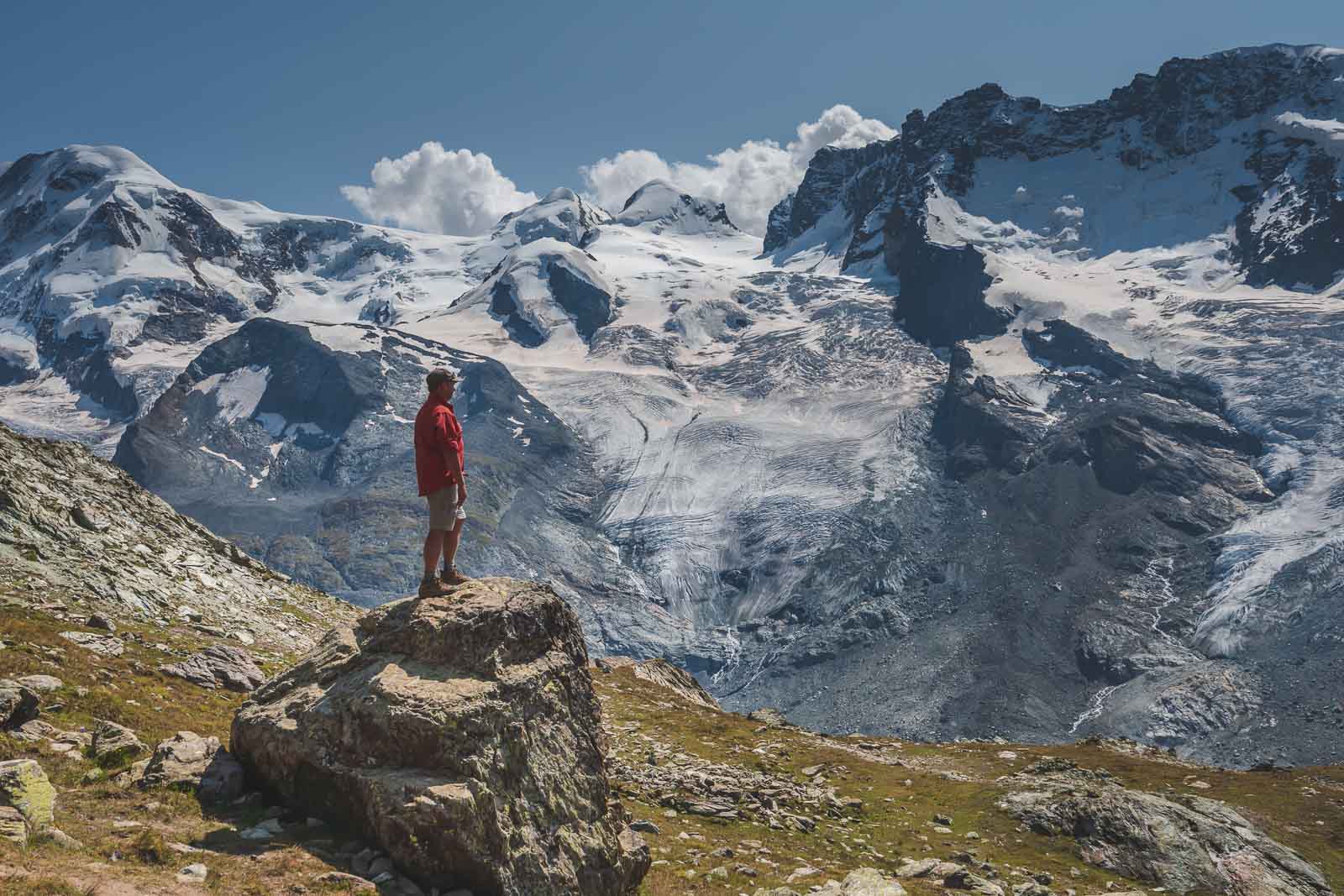
Morning: Matterhorn Glacier Paradise
Today is all about high-altitude adventure. Take the cable car from Zermatt to Matterhorn Glacier Paradise—Europe’s highest cable car station at 3,883 meters. The views from the summit are astonishing, offering a sweeping panorama of 38 alpine peaks and 14 glaciers across three countries. At the top, walk through the Glacier Palace, an ice tunnel carved inside the glacier with ice sculptures and a frosty ambiance. An exciting attraction here is the ice cave, which adds to the unique experiences available. Tickets cost around CHF 100–120, but your Swiss Pass will save you some francs.
Afternoon: Lunch and Scenic Views
After taking in the icy views, stop for lunch at the mountain-top restaurant. They serve alpine favorites like rösti, sausages, or warming soup—ideal comfort food with a view. Once you’re back in town, enjoy a more relaxed afternoon. If you skipped the Matterhorn Museum the day before, now’s a great time to visit. Or just soak up the alpine scenery from a cozy café like Cup’s Coffee Bar.
Evening: Final Night in Zermatt
For your final night in Zermatt, treat yourself to dinner at the charming Restaurant Julen, which serves traditional recipes with a gourmet twist. If you’re still in the mood for adventure, consider booking a stargazing session or enjoying a fireside drink at your hotel. Zermatt is also the start or end point of the famous Glacier Express—so if you’re continuing the journey or just passing through, you’ll feel the legacy of one of the world’s most beautiful train rides all around you.
Day 13: Zermatt to Locarno via Domodossola
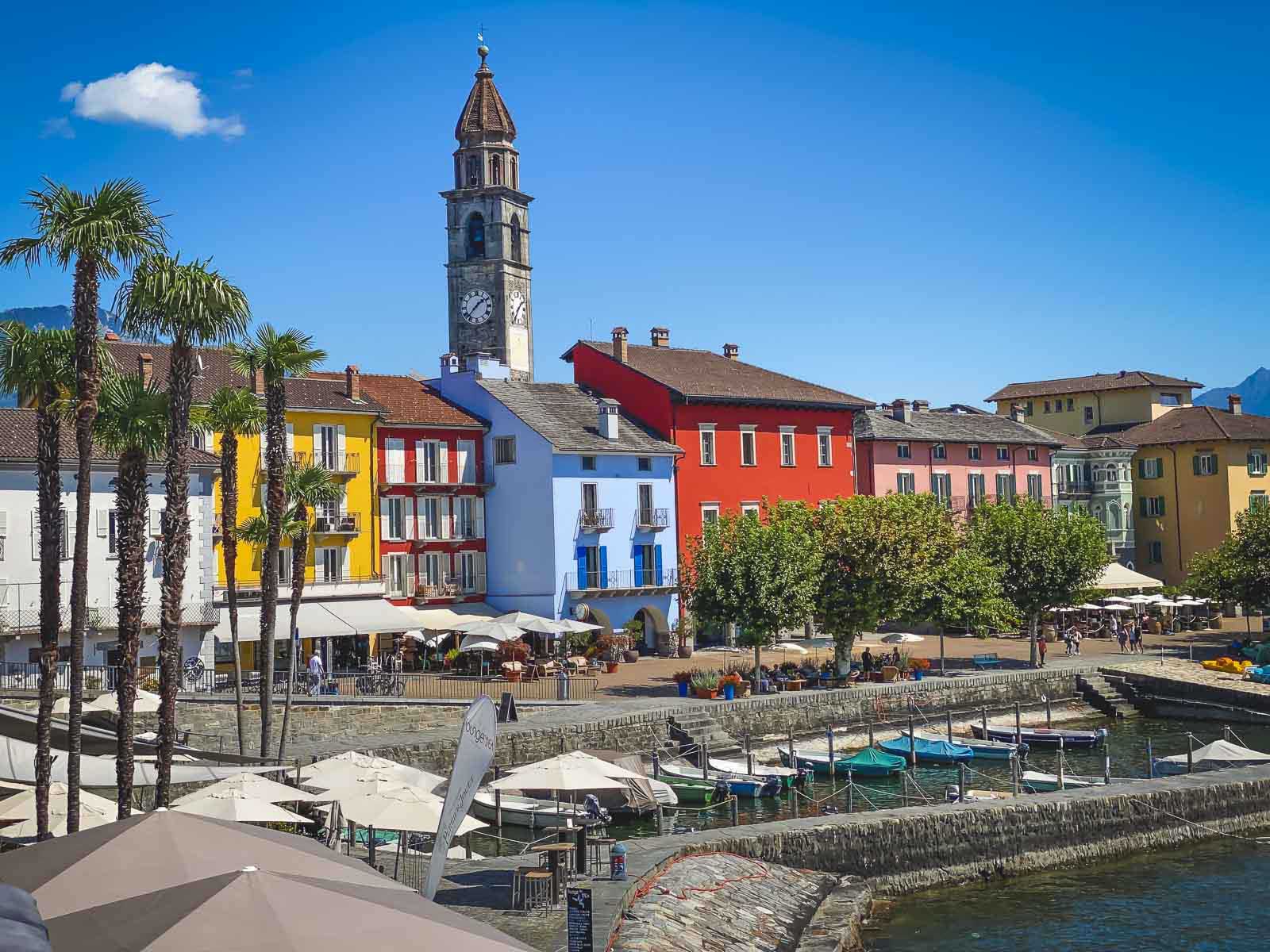
For this section, you can rent a car and enjoy the drive. We found that having a car rental was the best way to get around the Locarno region of Switzerland.
Morning: Scenic Journey to Locarno
After breakfast, begin your scenic journey to Locarno via the famous Centovalli Railway. First, take a train from Zermatt to Visp and connect to Domodossola, just across the Italian border. From here, hop on the Centovalli Railway (the “One Hundred Valleys” line), which is one of the most beautiful train rides in Switzerland. This short train ride winds past dramatic gorges, waterfalls, vineyards, and charming villages.
Afternoon: Explore Locarno’s Lakeside Charm
Once you arrive in Locarno, drop your bags and explore this sun-drenched lakeside town located on the shores of Lake Maggiore. Take a stroll along the lakeside promenade, relax by the waterfront, or enjoy a coffee in the main square, Piazza Grande. For panoramic views, ride the funicular up to the Madonna del Sasso Sanctuary, a pilgrimage site perched above the city.
If you have time, explore the nearby valleys—Maggia and Verzasca—for a walk across the famous stone bridge in Lavertezzo or a refreshing dip in crystal-clear rivers. These areas are full of charming villages, lush trails, and postcard-perfect scenery. You’ll get a taste of the Italian-speaking region of Switzerland at its best.
Evening: Swiss-Italian Dinner and Sunset
Locarno is all about great food and warm evenings. For dinner, we recommend Grotto Broggini, a rustic outdoor restaurant in nearby Losone famous for grilled meats and Ticinese specialties. Or stay in town and try Ristorante Sensi for lakeside views and elevated Mediterranean flavors. End your day with a glass of Merlot from the region and soak in the relaxed ambianceDay 14: Locarno to Lake Como & Back to Zurich
Day 14: Locarno to Lugano and the Verzasca Valley
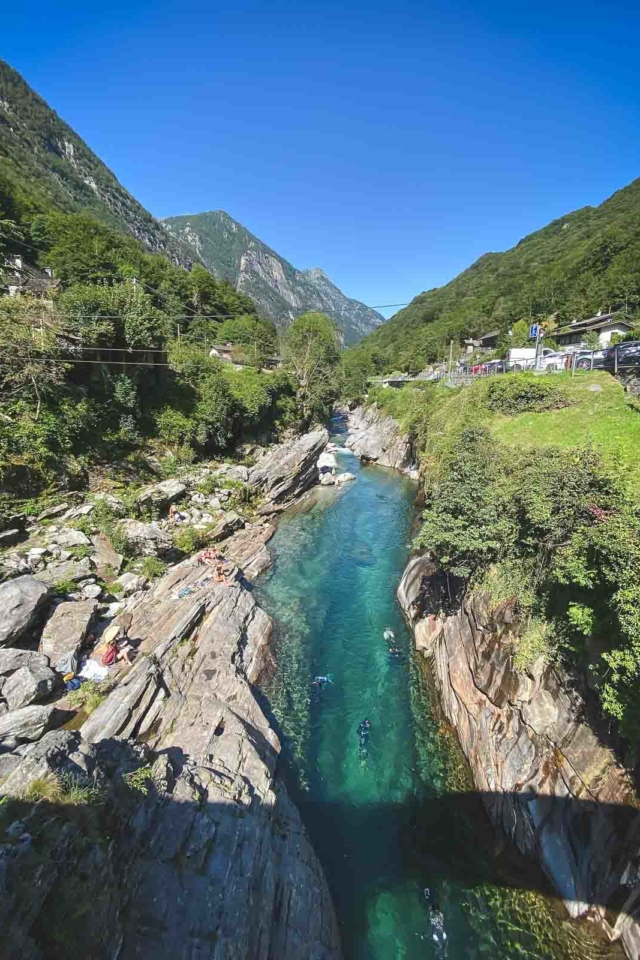
Morning: Day Trip to Lugano
For your final day in Switzerland, head south from Locarno to Lugano, the largest town in the Ticino region. The short train ride takes about 45 minutes and offers beautiful views along Lake Maggiore. Once in Lugano, explore Parco Ciani, one of the most beautiful lakeside parks in Switzerland, and stroll along the lakeside promenade with views of Monte Brè and Monte San Salvatore. Wander through the cobbled streets of the Old Town and browse boutiques or grab an espresso in Piazza della Riforma.
Afternoon: Visit the Verzasca Valley
Return to Locarno by early afternoon and head out on one last scenic adventure to the Verzasca Valley. This area feels like stepping into a postcard, with emerald rivers, ancient stone bridges, and picturesque villages. Walk across the famous Ponte dei Salti (the double-arched stone bridge in Lavertezzo), go for a swim in the crystalline water (weather permitting), or enjoy a picnic in the shade. This region is perfect for those final breathtaking views and Instagram stories that capture Switzerland’s quieter, more relaxed side.
Evening: Final Meal in Zurich or Stay in Locarno
Return to Locarno to collect your luggage and board the direct train to Zurich via the Gotthard Base Tunnel. The ride takes just over 2 hours and gives you one last scenic journey through Switzerland’s heart. If you’re flying home the next morning, stay near Zürich Airport for convenience. Plan your travel arrangements for the flight home from Zurich to ensure a smooth and timely departure.
Practical Information
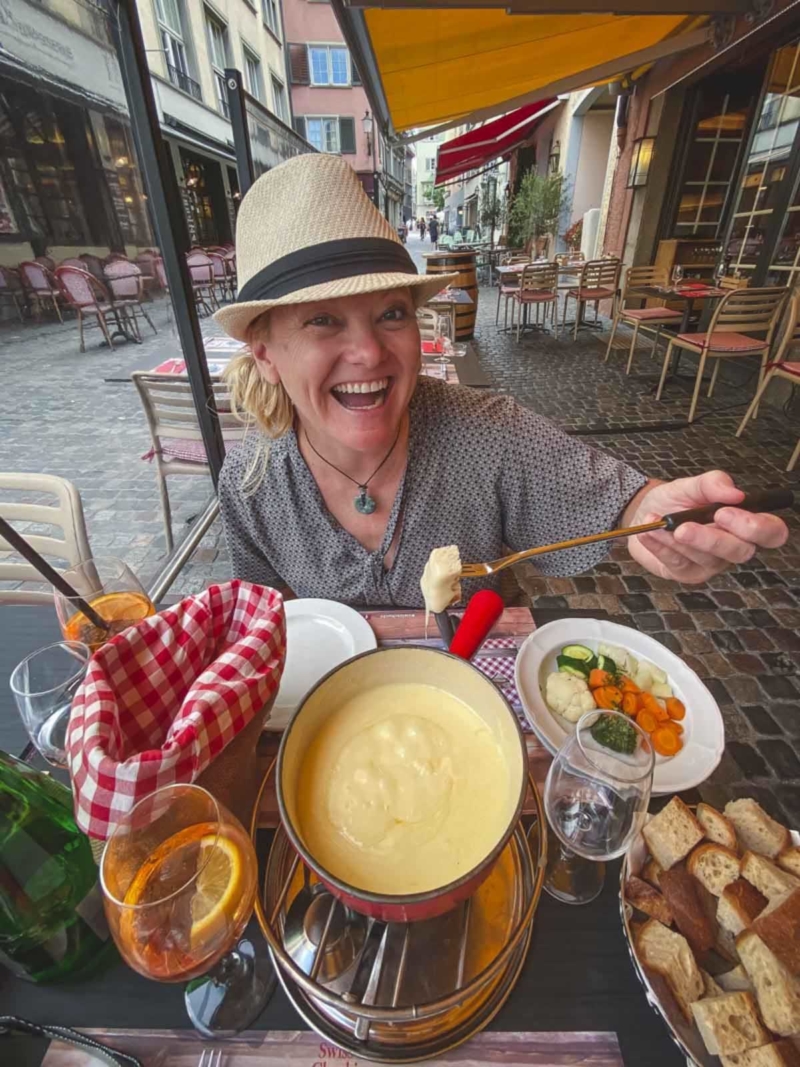
Getting Around
Public transport in Switzerland is excellent. We strongly recommend the Swiss Pass for unlimited travel by train, bus, boat, and even cable car discounts. While renting a car is an option, it’s not necessary due to the efficiency of Swiss trains.
Budgeting
Expect to spend around $6,000-$7,000 USD per person for two weeks, covering accommodation, transport (second class), meals, and activities.
Currency and Language
Switzerland uses the Swiss Franc (CHF), though Euros are sometimes accepted. German, French, Italian, and Romansh are the official languages, but English is widely spoken.
Best Time to Visit Switzerland
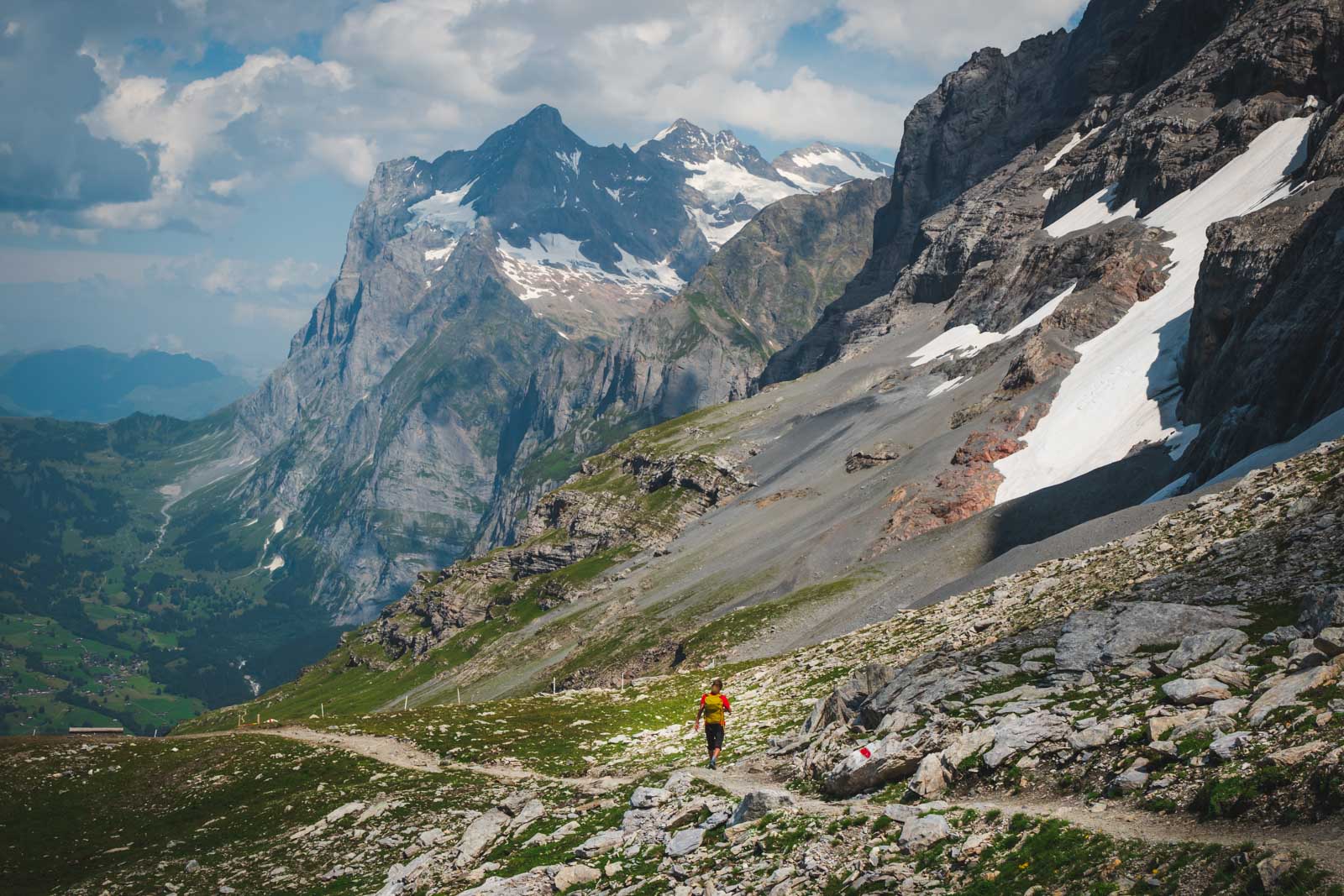
Visit between May and September for the best weather and hiking opportunities. Winter months (December to March) are ideal for winter sports enthusiasts.
We’ve traveled extensively through Switzerland, and this two-week itinerary includes our absolute favorite places and experiences. From breathtaking mountain excursions and charming villages to delightful culinary experiences and stunning lakeside promenades, this itinerary offers something for everyone. Enjoy your amazing trip to Switzerland—we know you’ll love it as much as we do!

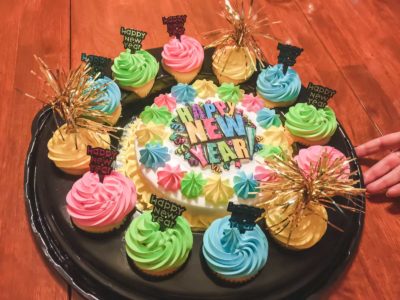
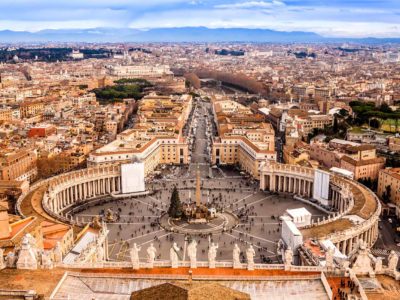
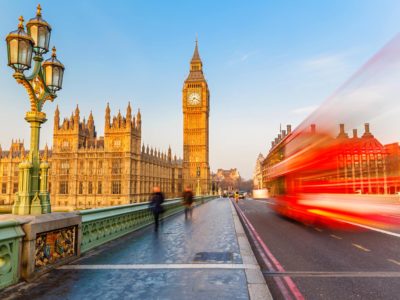
Oh Seriana this looks amazing!
My son & I have chosen Switzerland for a week vacation together!! this itinerary sounds great! can you recommend places to stay on this week trip?
Thank you so very much!
Julie
Thank you so much for sharing this itinerary – My family and I will be visiting mid September 2023 and we are going to follow this route – Thank you so much very kind of you
Where should we stay during this trip? Your help is much appreciated!
Thank you once again
Ateka
Really nice schedule. Looking to follow this when I visit Switzerland with my family this summer. To follow this schedule, can you please comment on which city to stay in to make the most use of the time? Thanks.
Great Information! Thanks a ton. Switzerland is undoubtedly blessed with mother nature 🙂
Fab list – but no Geneva? I used to live just across the border in France from Geneva and loved the area (on both sides of the border). Lac de Geneve is well worth seeing and perhaps going on a cruise around. Plus you know – awesome shopping! Gruyeres is another of my favourite spots. Besides all the cheese, I loved the HR Giger museum. Did you visit? If you like the Alien movies it’s definitely one to include on the to do list.
Hello Reeva
Thank you for your comment. Yes, Lake Geneva is fantastic and Gruyères definitely also packs a ton of charm. I’ve visited both places several times and love them. But with Switzerland being blessed with so many awesome destinations, it’s basically impossible to fit everything into a 7-day itinerary;-) That’s why I had to make some cuts. But at least I managed to add parts of Lake Geneva by putting Montreux on the list.
Never heard of the Alien place, though. Thanks for the tip!
All the best,
Seraina
I’m glad you like the itinerary and good on you for having Switzerland on your bucketlist. That’s a first step 🙂 I also hope you’ll one day get the chance to come over.
All the best,
Seraina
Thank you for your comment! Yes, Switzerland certainly is a beauty and despite it being such a small country, there’s heaps to discover. I’m glad you like the article 🙂
Dear Jim
Thank you for your comment and yes, I absolutely hope it’ll inspire people to come over to Switzerland once it’s safe to travel again 🙂
Seraina
Switzerland is the heaven on earth and there are so many things to explore in Switzerland. This blog is more than sufficient to tall you about the beauty of Switzerland.
Thanks for sharing this amazing article!
What an amazing itinerary! I have always included Switzerland on my bucket list for too long! Thanks for this post, now I’m really excited and encouraged to travel there! I hope I can finally get the chance to be there and live every wonderful moment that there is!
Thanks so much for the post Seraina, Switzerland has been on my bucketlidt for sometime but due to being so far away and the high costs of the country I’ve been putting it off for some time.
I absolutely love how you’ve captured the enchanting nature of the locations and inspire the wanderlust, with equally stunning photography.
Thank you Kaylini for your lovely comment! I really hope one day you can make it to Switzerland, despite our high prices. There are some great ways to save money and it will definitely be worth it 🙂
Take care,
Seraina
Switzerland , a dream destination of most of the people and your this article can make someone more excited to visit.
Really Amazing
When I read your Blog
I Feel that I am really Visiting Switzerland
Very Informative
Thanks Paul, I’m glad you like the post. And hopefully, you can one day visit Switzerland for real 🙂